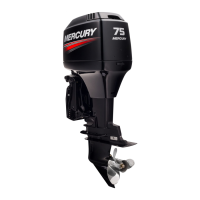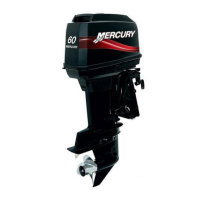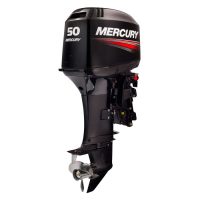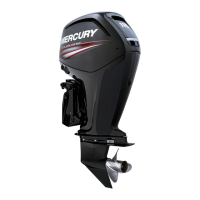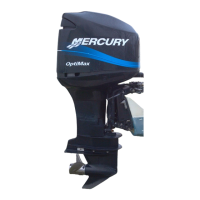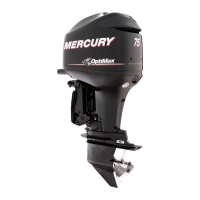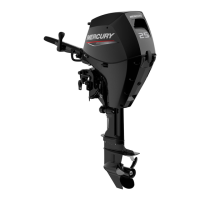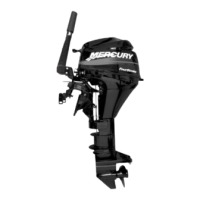!
WARNING
Fuel leakage is a fire or explosion hazard, which can cause serious
injury or death. Periodically inspect all fuel system components for leaks,
softening, hardening, swelling, or corrosion, particularly after storage. Any
sign of leakage or deterioration requires replacement before further engine
operation.
IMPORTANT:If you use gasoline that contains or might contain methanol
or ethanol, you must increase the frequency of inspection for leaks and
abnormalities.
IMPORTANT:When operating a Mercury Marine engine on gasoline containing
methanol or ethanol, do not store the gasoline in the fuel tank for long periods.
Cars normally consume these blended fuels before they can absorb enough
moisture to cause trouble; boats often sit idle long enough for phase separation
to take place. Internal corrosion may occur during storage if alcohol has
washed protective oil films from internal components.
Fuel Additives
To minimize carbon deposit buildup in the engine, add Mercury or Quicksilver
Quickleen Engine and Fuel System Cleaner to the engine's fuel at each tank
throughout the boating season. Use the additive as directed on the container.
Low Permeation Fuel Hose Requirement
Low permeation fuel hoses are required for outboards manufactured for sale,
sold, or offered for sale in the United States. The 500R requires 12.7 mm (0.5
in.) inside diameter fuel hoses.
• The Environmental Protection Agency (EPA) requires that any outboard
manufactured after January 1, 2009, must use low permeation fuel hose
for the primary fuel hose connecting the fuel tank to the outboard.
• Low permeation hose is USCG Type B1‑15 or Type A1‑15, defined as not
exceeding 15 g/m²/24 h with CE 10 fuel at 23 °C as specified in SAE J
1527 ‑ marine fuel hose.
Fuel Demand Valve
Some boat fuel systems incorporate a fuel demand valve between the fuel tank
and the engine and others do not. This engine can be operated with or without
a fuel demand valve.
FUEL AND OIL
30 eng
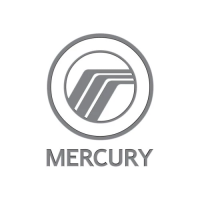
